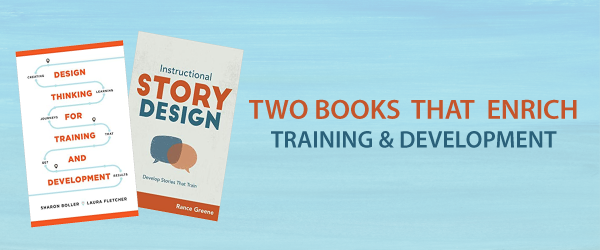
If you are looking for ways to bring creativity into your work, these two books may be just what you need. In Design Thinking for Training and Development, you’ll find a method and mindset for innovative thinking that adapts well to learning design. In Instructional Story Design, you’ll find creative ways to connect with the audience through stories.
Design Thinking for Training and Development by Sharon Boller and Laura Fletcher
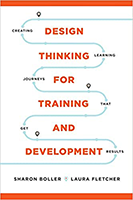 Design thinking is a collaborative method and mindset for generating innovative solutions to difficult problems. Long used for product and business innovation, authors Sharon Boller and Laura Fletcher make a case for using design thinking in learning experience design. Their book, Design Thinking for Training and Development, shows you how to do this.
Design thinking is a collaborative method and mindset for generating innovative solutions to difficult problems. Long used for product and business innovation, authors Sharon Boller and Laura Fletcher make a case for using design thinking in learning experience design. Their book, Design Thinking for Training and Development, shows you how to do this.
Design thinking runs counter to the fallacies embedded in dated ideas of learning design: that we don’t need to consider the needs of the user or that one learning event is sufficient for building competency. Their Learning Experience Design (LXD) framework is modeled on a human-centered design process that takes users on a learning journey. The learning journey they describe consists of four parts: prepare to learn; acquire knowledge or skill; build memory and competence; and maintain over time.
The LXD framework they present melds design thinking with instructional design in a real-world model. It starts with the typical request for training where stakeholders (often incorrectly) think they know the solution to problem: a course. It focuses on refining the problem in a way that gets at the root cause, rather than the problem in the training request. Typical to design thinking frameworks, there is a cycle of ideation and prototyping. Unique to their model is an implementation and evaluation phase, the end product and measurement of the learning journey.
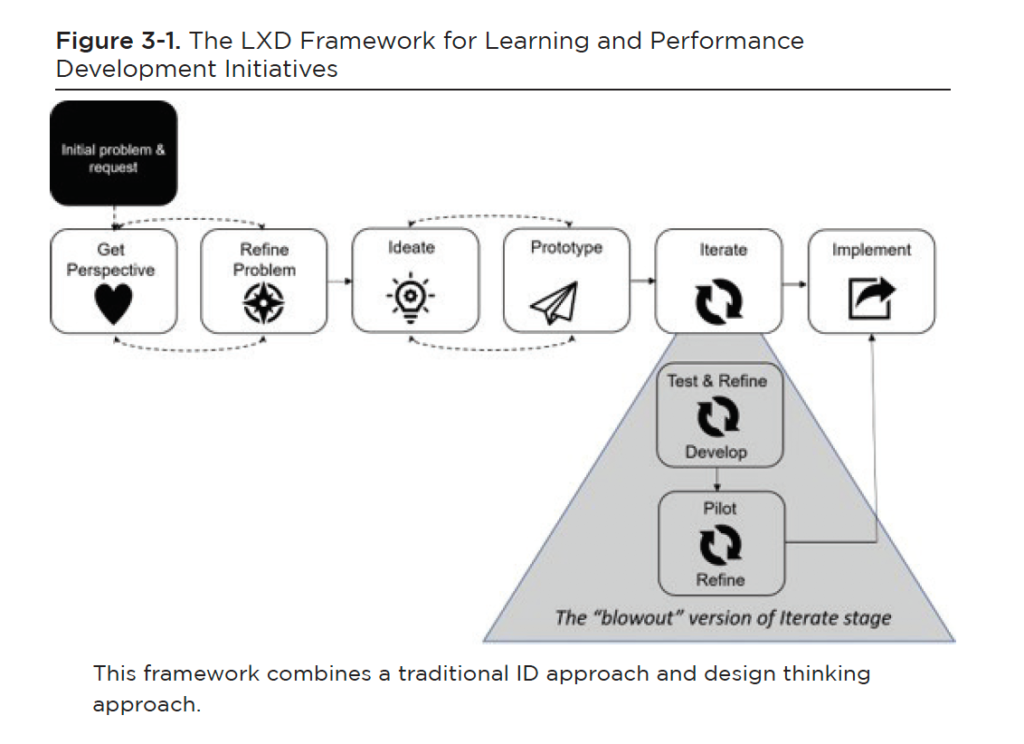
The core of the book walks readers through these phases, exploring the methods and how to use them to fit into learning and development practices. You’ll find lots of detailed explanations, tools and examples of using this approach in the real world. The final section guides readers on the sometimes trying path of getting buy-in from stakeholders to use a non-traditional approach.
I think this book will be a wonderful addition to your professional book collection if you want to create effective solutions to workplace performance problems. You will be impressed by the level of detail the authors poured into this book.
Instructional Story Design by Rance Greene
You may think of story writing as a difficult art form to master. But have you considered what it takes to design a story? That’s the perspective from which author, Rance Greene, writes this book. From the start, he adeptly ties story design to an instructional design model, making the process almost familiar to learning professionals.
He uses this three-part structure—the Story Design Model—to organize Instructional Story Design. Each part has several chapters that provide explanations, inspiration and examples to anyone who wants to get started with using stories for training. There is also a fourth part on overcoming barriers. It is the final push to get you over any obstacles you may encounter.
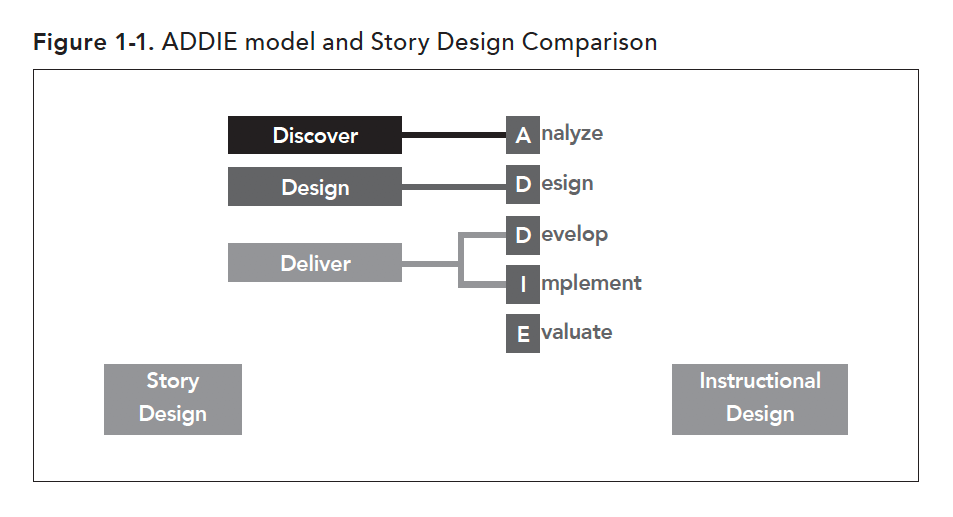
In Part 1, Discover, the book guides you through stakeholder conversations to discover three things: desired outcome, root cause of the problem and whether training is the solution. These critical conversations also tease out stories and case studies for later use. During this initial phase, you create a detailed audience profile and a list of observable actions that learners will need to demonstrate. In the next step, these assets will help you design stories.
Greene writes that stories require two essential ingredients: relatable characters and conflict. In Part 2, Design, the book shows you how to design these elements. The audience profile contributes to the design of relatable characters. The observable list of actions contributes to what the characters do. The key, Greene informs us, is to ensure that the characters’ actions contribute to conflict. This creates the desire for resolution, keeping learners interested and motivated. Most important in this phase, you learn how to build a story.
Finally, you learn how to Deliver the story to help people learn in Part 3. The medium dictates how it will be presented, but you also have choices. Will it be written, spoken, animated or a video recording? Instructional Story Design walks you through creating storyboards and thinking about all the possibilities.
I have no doubt that Instructional Story Design will help motivated readers learn to create better and more effective stories for training. It might just provide the creative boost you’ve been craving.
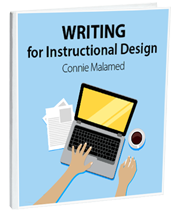

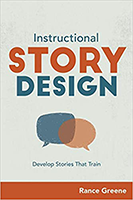
Leave a Reply